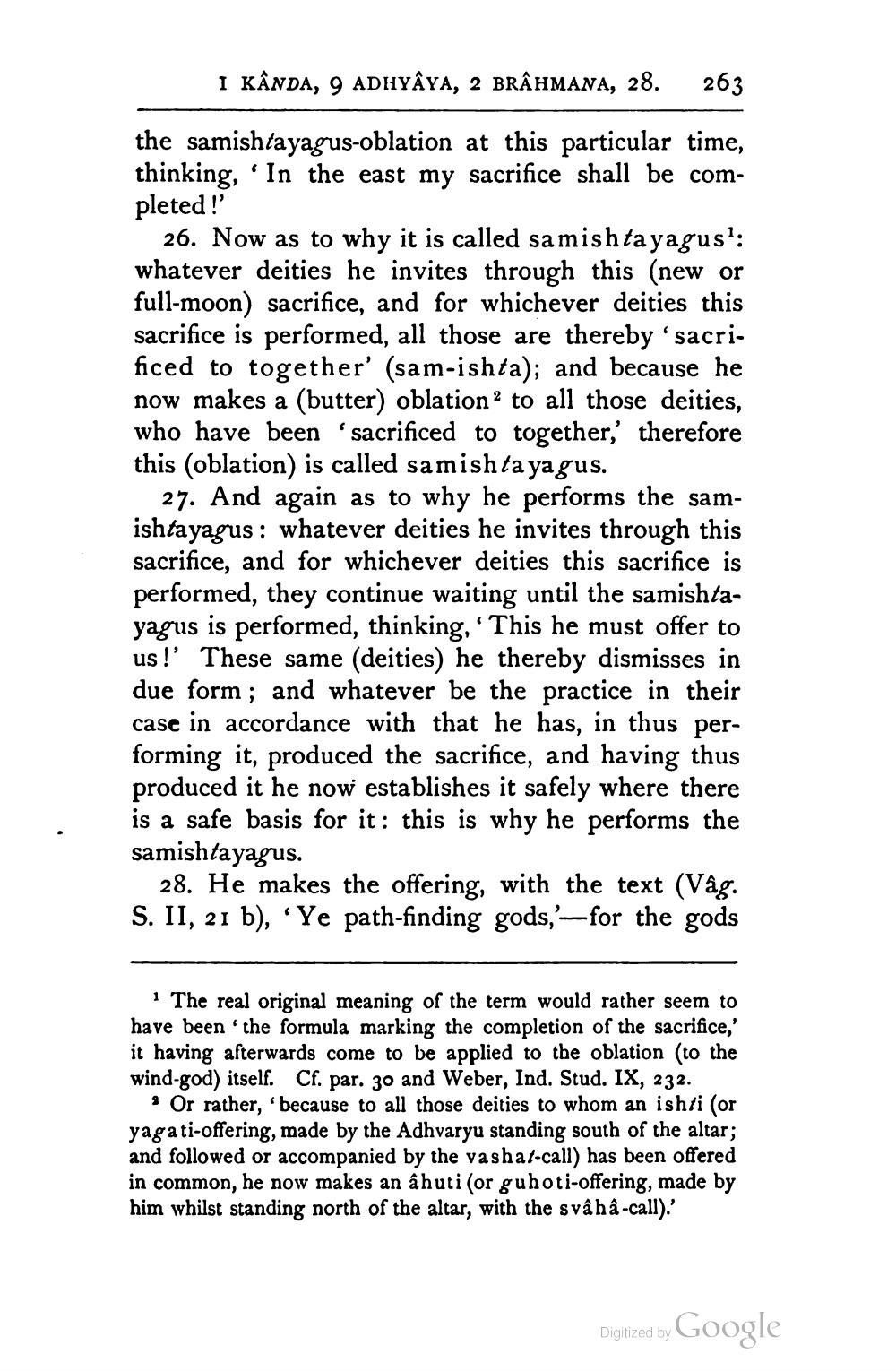________________
I KANDA, 9 ADHYAYA, 2 BRAHMANA, 28. 263
·
the samishtayagus-oblation at this particular time, thinking, In the east my sacrifice shall be completed!'
26. Now as to why it is called samishtayagus': whatever deities he invites through this (new or full-moon) sacrifice, and for whichever deities this sacrifice is performed, all those are thereby 'sacrificed to together' (sam-ishta); and because he now makes a (butter) oblation to all those deities, who have been 'sacrificed to together,' therefore this (oblation) is called samishtayagus.
27. And again as to why he performs the samishtayagus: whatever deities he invites through this sacrifice, and for whichever deities this sacrifice is performed, they continue waiting until the samishtayagus is performed, thinking, 'This he must offer to us!' These same (deities) he thereby dismisses in due form; and whatever be the practice in their case in accordance with that he has, in thus performing it, produced the sacrifice, and having thus produced it he now establishes it safely where there is a safe basis for it: this is why he performs the samishtayagus.
28. He makes the offering, with the text (Vâg. S. II, 21 b), 'Ye path-finding gods,'-for the gods
1 The real original meaning of the term would rather seem to have been the formula marking the completion of the sacrifice,' it having afterwards come to be applied to the oblation (to the wind-god) itself. Cf. par. 30 and Weber, Ind. Stud. IX, 232.
* Or rather, 'because to all those deities to whom an ishti (or yagati-offering, made by the Adhvaryu standing south of the altar; and followed or accompanied by the vashat-call) has been offered in common, he now makes an âhuti (or guhoti-offering, made by him whilst standing north of the altar, with the svâ hâ-call).'
Digitized by
Google




